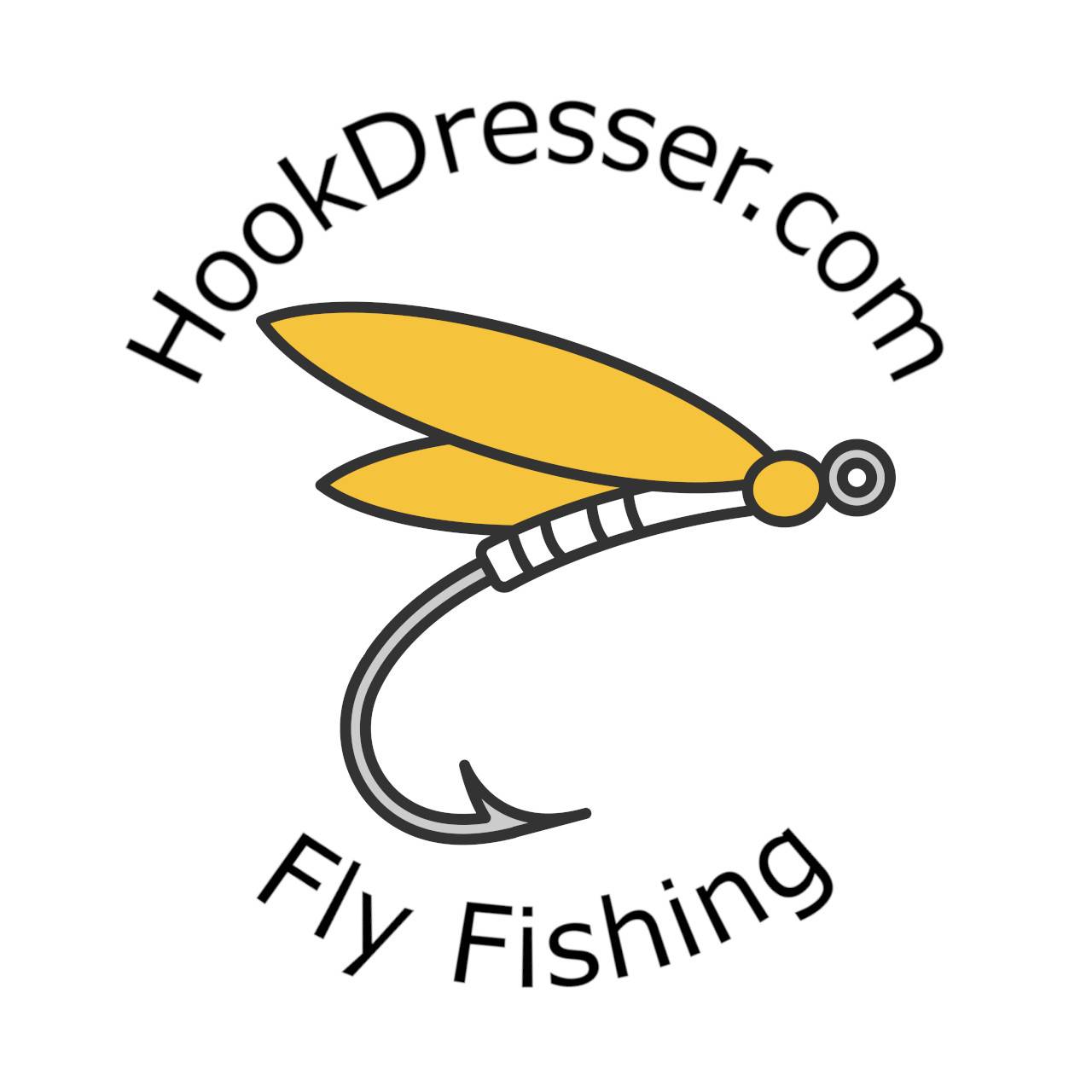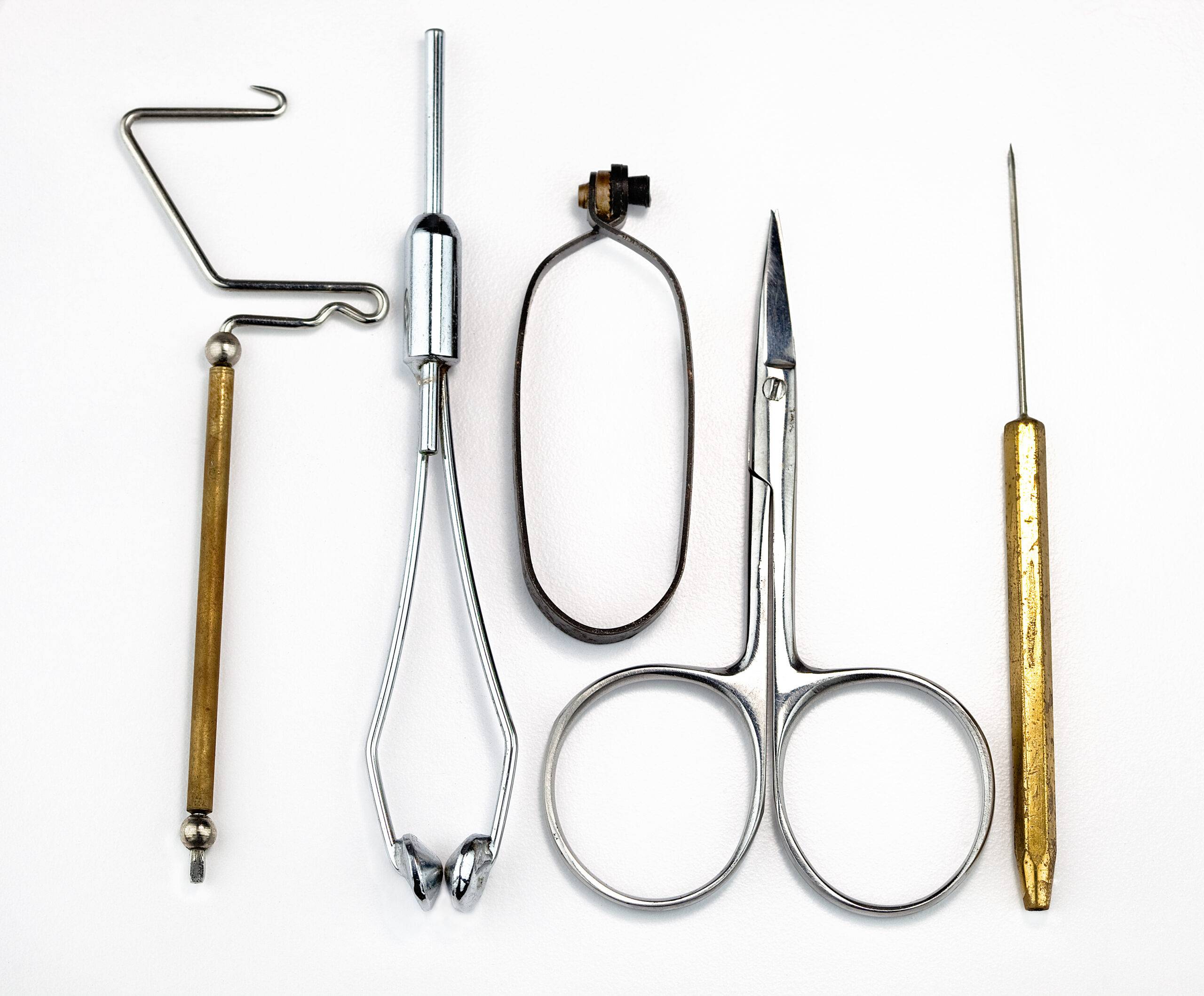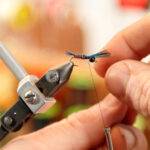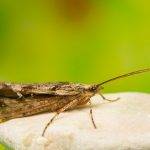As you progress in fly fishing, there will come a point where you begin to wonder “should I start fly tying?”
Catching a fish on a fly you have tied yourself is one of the most rewarding aspects of fly tying. While every fish you catch will be a thrill, one of the greatest pleasures in the sport is tricking a fish to take a fly you have tied yourself.
Fly tying is the art of creating insect and other prey imitations by combining fly tying materials such as wool, feathers, fur, and wire to create an artificial fly. Different materials make up the anatomy of the fly namely, the tail, body, body wing and hackle.
There fly is created by using a few simple fly tying tools including the fly vise, fly tying scissors, bobbin holders, hackle pliers, threaders, hair stackers, and tweezers.
In this article, we will go over the tools you need to tie flies and what they are used for in the fly tying process.
What Tools Are Needed to Tie Flies?
There are four essential tools you need to tie flies:
- Bobbin Holders
- Whip Finishers
- Bodkin
- Scissors
Other fly tying tools you may need include:
- Hackle pliers
- Threaders
- Hair Stackers
- Tweezers
You can buy the tools you need to tie flies individually or you can buy them as part of a fly tying tool kit. I recommend the Dr Slick Tool Kit or Loon Outdoors Fly Tying Tool Kit.
Both tool kits are the highest quality kits available. The tools in these kits are built to last. With the proper care you will never need to replace them.
You will also need a fly tying vise to hold the hook while you tie the fly. I recommend these best fly tying vises for beginners.
What Do Fly Tying Tools Do?
Fly tying tools enable the fly tier to tie flies more easily. Every fly tying tool has its own purpose in fly tying. Below I will discuss in detail each of the fly tying tools.
Fly Tying Bobbin Holders
Bobbin holders hold the spool of thread by maintaining the tension on the fly being tied. This prevents materials from becoming loose and falling off the fly. Whenever you stop tying to pick up more materials, the bobbin holder will hang below the hook and the weight of the bobbin holder with prevent the thread from unravelling.
There are various bobbin holders, some have a cylindrical tube while others have a circular area on the tube to make holding the bobbin more comfortable.
When choosing a bobbin holder, the one of the most important considerations to take into account is what material the tip of the bobbin holder is made from. Most bobbin holders have a metal, plastic or ceramic tip. Some bobbin holders have a ceramic tube.
A metal tipped bobbin holder through regular use, may begin to develop grooves in the tip. These can become sharp and lead to thread becoming damaged or even cut.
I recommend use a bobbin holder with a ceramic tip or ceramic tube.
Bobbin Holder Threader
A bobbin threader, also known as a bobbin wire loop tool, is a tool for threading the thread or silk through the tube of the bobbin holder.
To use the bobbin holder threader, make sure you have a spool of thread on the bobbin holder. Next, put the wire loop through the top of the bobbin holder tube, place the thread through the loop and pull the tool back through the bobbin holder tube.
Your thread will now be ready for tying.
Many fly tiers wet the end of their thread with their mouth and then push the end of the thread through the bottom of the bobbin holder tube. Then, they suck the thread through the top end of the tube. This is an effective method, but the bobbin holder threader makes the process quicker.
Hackle Pliers
Hackle pliers make winding a hackle along a hook shank a breeze. A good set of hackle pliers will keep a tight hold of a hackle without slipping.
The surface of the jaws should be smooth as a rough surface could damage or even cut a feather. If your hackle pliers are cutting or damaged the tip of the hackle you can file them down to smooth the tips.
There are different designs of hackle pliers including rotary hackle pliers. Some fly tiers find winding a hackle even easier with the rotary hackle pliers.
Whip Finisher
A whip finisher tool makes finishing a fly quick and easy. Some fly tiers prefer to use their fingers for finishing their flies. However, when using a finishing tool, you have more control over the placement of the finishing knot.
While the design of whip finishing tools varies, most finishing tools have a straight handle with a hook at the other end and a wire arm below the hook. This allows the tier to create a triangular shape the thread and tie the whip finish knot on the head of the fly.
Fly Tying Scissors
When starting to tie flies, it is important to have a dedicated pair of fly tying scissors that are not used for non-fly tying purposes. Fly tiers who have been in the hobby for a while typically have a range of fly tying scissors and will change between them based on the task at hand.
Fly tying scissors are smaller than other scissors used for crafts or domestic purposes.
The blades on fly tying scissors can be straight, serrated or even curved depending on the cutting requirements of the fly.
Straight fly tying scissors with a fine point will be ideal for cutting materials close to the hook, while curved scissors will be ideal for cutting and forming muddler heads.
You should have at least two scissors, one pair of fine fly tying scissors for cutting delicate materials such as trimming hackles and a tougher pair of scissors for through tougher materials such as hair, feather stalks, tinsel, or wire.
Hair Stackers
Hair stackers are used in fly tyin to align the different synthetic and natural fibres. Fibres such as deer or elk hair can be aligned in a hair stacker before being tied into the fly.
Hair stackers come in various sizes and are made using different materials. The larger hair stackers are ideal for tying big flies for pike, bass, or saltwater species.
To use a hair stacker, cut a small clump of deer or elk hair and put it into the hair stacker funnel tips first.
Tap the stacker against the fly tying bench or another hard surface several times to align the fibres. Remove the funnel and pick up the hair fibres by the tops. All the tips should be aligned and ready for tying.
Bodkin or Dubbing Needle
Bodkins, also known as dubbing needles, are used for applying head cement, teasing out dubbed materials, dividing wing tips as well as freeing trapped hackle fibres. They can also be used for removing head cement if it has become trapped in the eye of the hook.
Dubbing Twister
A dubbing twister is a fantastic tool, that can make dubbing a lot easier. Not all tiers use dubbing twisters, instead preferring to apply dubbing to the thread using wax or their fingertips.
The dubbing twister allows fly tiers to create dubbing loops for twisting dubbing and threads into a rope. This rope of dubbing can then be easily wound round the shank of the hook.
Dubbing twisters keep an even tension on the thread loop keeping the fur in position. The sprung arms as well as the heavy body keep the threads taught.



